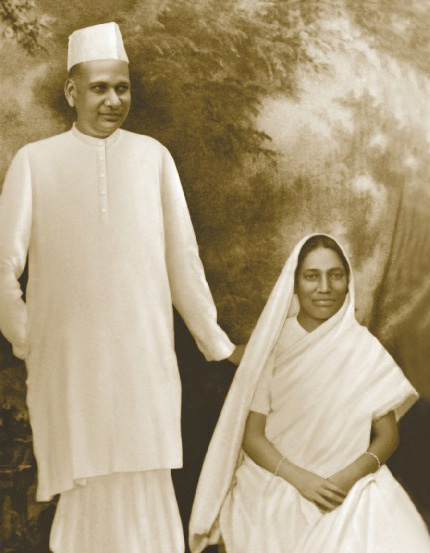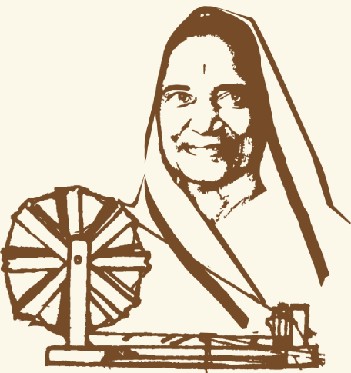About Jankidevi Bajaj
Sacrifice, Courage, and Fortitude


Sacrifice, Courage, and Fortitude
The life of Smt. Jankidevi Bajaj (1893–1979) is a story of sacrifice, courage, and fortitude. Born into a prosperous Vaishnav Marwari family in Jaora, Madhya Pradesh, her life took a decisive turn at the age of 8 when she was married to Jamnalal Bajaj, then 12, in 1902. She grew into womanhood in the Bajaj household of Wardha, Maharashtra — a place that later became a centre for Gandhian thought and India’s freedom movement.


Walking the Gandhian Path
Inspired by her husband Jamnalalji’s commitment to Gandhi’s principles, she embraced simplicity as her strength.
- In 1917, at the age of 24, she renounced her jewellery, believing that “gold breeds jealousy and fear,” and wore no ornaments again.
- In 1919, she defied the oppressive practice of purdah and urged other women to reclaim their dignity in public life.
- In 1921, at the age of 28, she gave up silks for khadi, spinning yarn with her own hands as an act of Swadeshi and Self-reliance.
- In the same year, at Wardha’s Gandhi Chowk, she burned all imported goods and textiles from her household, in a seven-day Holi, turning her protest into a public festival of patriotism.
Social Reform and Courageous Leadership
Jankidevi lived her values and became a living example of social reform in action.
- On 17th July 1928, she, along with Jamnalalji, opened the Lakshminarayan temple in Wardha to Dalits, a historic first in India.
- At home, she ensured that meals were served by Dalit staff members, breaking entrenched social barriers.
- She opposed untouchability and supported equality not just with words but through daily action, making her home a microcosm of the India she wished to see.
Freedom Struggle
Jankidevi carried Gandhiji’s message of Swaraj to rural India, speaking to everyone with conviction.
- Her speeches and presence inspired thousands to participate in the freedom struggle from the Salt Satyagraha of 1930 to the Civil Disobedience Movement of 1930 – 34, making her a true freedom fighter in her own right.
- She travelled tirelessly across rural India during these movements, addressing thousands of villagers and women with simplicity and resolve.
- She was imprisoned during the Civil Disobedience Movement (1932), yet she remained undaunted, demonstrating that true patriotism is shown through action, not words.
Champion of Rural Development and Women’s Empowerment
Long before the term “women’s entrepreneurship” became common, Jankidevi made it a reality in India through her vision, actions and dedication to rural self-reliance.
- A dynamic advocate of women’s education, she urged women to leave their homes and assert their dignity through knowledge and employment.
- She worked with Acharya Vinoba Bhave on movements such as Bhoodan (Land Donation) – 1951, Koopdan (Gifting of Wells) – 1953, and Gram Seva (Rural Service).
- As President of the Akhil Bhartiya Goseva Sangh for Cow Protection from 1942, she combined compassion with constructive action, embodying the Gandhian ideal of Sarvodaya (Welfare of all).·
- She promoted khadi, handicrafts and rural industries, creating livelihood opportunities and sowing the seeds of women’s rural entrepreneurship.
Recognition and Legacy
Jankideviji’s vision lives on today through numerous institutions, awards and initiatives inspired by her values and work
- In 1956, the Government of India honoured her with the Padma Vibhushan, one of the nation’s highest civilian awards, for her remarkable contribution to society.
- Her autobiography, My Life’s Journey, is a moving record of her transformation from a traditional housewife into a Gandhian social reformer and national leader.
- The IMC Ladies’ Wing Jankidevi Bajaj Puraskar for Rural Entrepreneur was established in her centenary year (1993). Through this award, her legacy continues to keep alive her vision of empowered women leading rural transformation.
As Jankideviji reflected in her writings:
“Freedom for our nation will be real only when our women are free, and our villages are strong.”